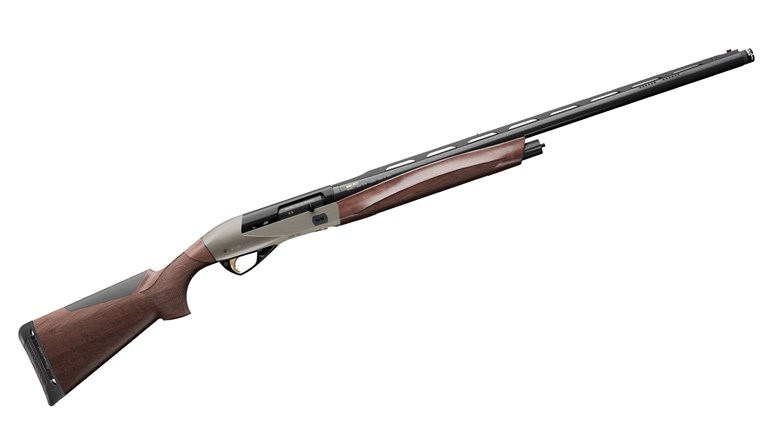
Let's face it: good glass is good glass. That's why the companies that make quality glass so often wind up plying their trade in a bevy of industries. Your non-hunting friends have almost certainly heard the names Swarovski and Zeiss, but they may not realize that those companies are also part of the firearms industry. And though I'm sure non-hunters have swooned over Ashton Kutcher's Nikon camera ads, many of them are probably blissfully unaware that the same company makes reliable, affordable riflescopes that hunters throughout the world use every year to help zero-in on big game. By the same token, there are probably a few things that AmericanHunter.org readers don't know about Nikon, too, which is why we're here today. Below you'll find 10 (potentially) enlightening facts about Nikon.
Oh and, as everyone knows, Nikon's riflescopes, binoculars and rangefinders are just a portion of the overall brand. I'm going to try to keep things as hunting-adjacent as I can with our Top 10. There'll be a bit of history, for sure, but we're here to talk hunting, not cameras. With that said, let's get started.
10. Though it’s created a strong brand name for itself, Nikon isn’t quite as old as many of its brethren. The company was founded in Tokyo, Japan in July 1917 when three leading optical manufacturers merged to form a comprehensive firm then known as Japan Optical Industries Corporation. Yep, it’s rapidly creeping up on its 100th Anniversary. I don’t have any doubt that it will celebrate in kind.
9. Like I said above, while the public at large may be more hip to just one portion of Nikon's reach--cameras--you and I know the company for its game spotting significance. Truth be told, binoculars are the very foundation of the company. As early as 1918, not even a year into its existence, Nikon exported over 15,000 high-quality prism binoculars to England, France, Russia and the United States.
8. Seriously, binoculars are what got the ball rolling over there. In 1921, Nikon first marketed the MIKRON 4x and 6x ultra-small-prism binocular. They were the first binocular that was completely developed, designed and manufactured by Nikon. They were reproduced in 1997.
7. One final point of emphasis: Nikon's been in the binocular game for a long while. The company's compact roof binoculars were actually added to the permanent collection at the New York Museum of Modern Art in 1980.
6. Many companies saw their priorities change a bit following World War II—and, yes, Nikon was very much one of them. It had spent the war years largely dedicated to producing optics for the Japanese military, and would redefine itself in the years that followed by focusing on cameras, microscopes, binoculars, surveying instruments, measuring instruments and ophthalmic lenses for civilian use.
5. The end of the war and the reorganization of the company allowed Nikon to establish a U.S. base of operations. Nikon Optical Co., Inc. (now Nippon Kogaku (USA) Inc.) was established in the States in 1953. Nikon Canada followed in 1978, and Nikon U.K. was established in 1979. Nikon Americas was later founded in 1981.
4. 1981 was a big year for hunting-related products. It was also the year that Nikon first started marketing its Fieldscope. The line's expanded quite a bit since then, I'd say.
3. 2001 was another landmark for the hunting and shooting industry. The Sport Optics division was reorganized into an independent company, allowing it to grow and develop on its own.
2. Nikon's most well known hunting line, the Prostaff Series, isn't all that old. It was launched in 2011, and has since expanded to feature a bevy of high-quality, value-priced optics that hunters and shooters throughout the country have come to appreciate.
1. Lots of optic companies offer ballistic support online, and a few even offer mobile apps. Nikon was among the first to do both—but didn't stop there. A few years back, the company introduced the Nikon Spot On Ballistic Wind Meter, which interacts directly with the Nikon Spot on Ballistic app. The app lets hunters and shooters match their riflescope and reticle to the trajectory of virtually any ammunition—the new wind meter adds one more piece to this puzzle. It plugs into the headphone port of your smart phone and reads the wind speed and direction, allowing the app to show a hold that compensates for wind drift. A handy little feature, indeed.
Looking for past installments of our "10 Things You Didn't Know" series? Hit the links below!
• 10 Things You Didn't Know About Hornady
• 10 Things You Didn't Know About Mossy Oak
• 10 Things You Didn't Know About TriStar Arms
• 10 Things You Didn't Know About Can-Am
• 10 Things You Didn't Know About Winchester Ammo
• 10 Things You Didn't Know About Benelli
• 10 Things You Didn't Know About Beretta
• 10 Things You Didn't Know About Remington
• 10 Things You Didn't Know About Ruger
• 10 Things You Didn't Know About Smith & Wesson
• 10 Things You Didn't Know About Weatherby
• 10 Things You Didn't Know About Federal Premium
• 10 Things You Didn't Know About Taurus USA
• 10 Things You Didn't Know About Leupold




































